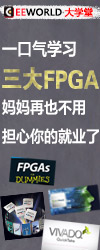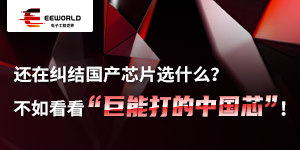An Introduction to Digital Control of Switching Power Converters
Geof Potter
Applying digital methods to the control of power converters, in particular board-mounted dc/dc converters, offers a rich set of possibilities from which to create new features, improved performance, and much greater product flexibility, and all at lower cost. Power converter operating characteristics dictated by a stored program, rather than the parameters of a set of discrete components, can mean tremendous cost and space savings as well as capacity for real time adaptation of those characteristics, greater sophistication in control algorithms and the ability to generate, store and recall valuable real-time functional data.
Digital signal processors, micro-controllers, flash memory and fast A/D converters will soon do to power conversion technology what they did to 35mm cameras.
This paper is intended to provide a brief, qualitative overview of how a digital control system is implemented in a familiar analog environment, i.e. that of a straightforward, board-mounted DC/DC converter. Terms and techniques discussed here apply to virtually any power supply design, but by no means exhaust the range of design alternatives available.
Where is digital control applied?
There are two areas within a converter module where “control” is applied;
1. active feedback (or feed-forward) schemes driving power switch duty-cycle modulation to produce “regulation”, usually of output voltage. In other words, the primary operational control of the module, and;
2. peripheral functions (such as voltage programming, sequencing, OTP, etc.) that guide and protect the device or communicate with its environment.
Peripheral functions have long been within the scope of digital control methods because necessary speed and complexity are not great. On the other hand, digital control of an active feedback loop, including a pulse modulation process (the “core” of a power converter), has been an elusive prize due to size, cost and power consumption of components for needed for practical operation. To successfully compete with a low cost analog control system, a digital equivalent requires data resolution and “latency” (path delay) numbers that have been available only in large, expensive DSP and A/D converter products. To compound the difficulty, there are few, if any, integrated devices on the market, at the present time, that contain all the necessary functions to constitute a reasonable power “controller”. Only recently has enough digital device design talent has been brought to bear on the concept of “full digital control” of power converters to produce solutions to those formidable challenges.
We will explore how the “need for speed” is being addressed, suggest where challenges lie for power supply designers trying to apply digital control, and discuss some of the many possibilities for feature enhancement that come with on-board digital apparatus.
Comparison of analog and digital power control architecture.

A typical switching power converter is shown above in Fig. 1. An analog control system provides output voltage regulation by comparing a scaled representation of the output voltage to a reference voltage and amplifying the difference. A resulting “error voltage”, applied to an analog Pulse Width Modulator results in a variable width drive pulse that has an average value equal to the desired output voltage. Amplified in voltage and current (power) by the power switching stage, drive pulses are averaged by the filter to yield a DC output voltage.
As a closed loop system, this circuit requires a control mechanism to insure that the gain around the loop (from output sensing through around to the filter) does not exceed unity at any frequency where phase shift around the loop reaches 360 degrees. In addition to a built-in 180 degrees necessary for regulation, phase shift around the control loop is caused by delays introduced by reactive elements (capacitors or inductors) and to a smaller degree by operational delays in amplifiers, modulator and switching devices.
Adjustment, or compensation, for gain variation and phase shift over a range of frequencies is usually incorporated into error amplifier circuitry to assure that the circuit will be stable when operating under anticipated conditions.
Isolation between input and output may be included in the design, but even with isolation, conceptually most power converters operate as shown in Figure 1.
It is possible to incorporate digital devices, such as “micro-controllers”, into an analog control system like that of Fig. 1. An MCU can be set up to adjust and manage operation of an analog PWM ( change switching frequency, for example) but that sort of control is not the subject of this paper. Rather, we are concerned, here, with a control system in which the feedback process is managed entirely by digital techniques. Specifically, the PWM function, error signal, and compensator functions are performed in digital mode.

 1/10
1/10 
 京公网安备 11010802033920号
Copyright © 2005-2025 EEWORLD.com.cn, Inc. All rights reserved
京公网安备 11010802033920号
Copyright © 2005-2025 EEWORLD.com.cn, Inc. All rights reserved








 提升卡
提升卡 变色卡
变色卡 千斤顶
千斤顶




